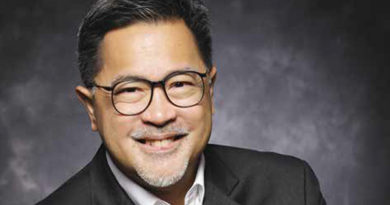5 Steps to Planning Your Retirement
By Jesi Bondoc, RFP©
Retirement facts in the Philippines show that on an average, Filipinos think of retirement at age 28 but only 5% seriously plan for it. The rest either rely on government pensions or their children to take care of them during their retirement years.
Retirement is one the most important events in a person’s life. Enjoying a comfortable lifestyle once we reach our golden years is what most of us dream of. Some might aspire retiring in a house with a beach front view, others a farmland backdrop and some simply want to spend their retirement days with their families.
No matter how simple or grand your idea of retirement, early planning is the key in achieving your goals. Retirement planning is an extensive process that needs long term commitment. Building your nest egg, making it grow to meet your retirement needs, managing the funds and preserving it are just some processes that you have to undertake in planning for your retirement. The ongoing responsibility to handle these processes is one of the reasons why many people forego, delay or simply ignore retirement planning. Unfortunately, doing nothing to prepare for this important life event can take a heavy toll in all aspects of your life in the future.
If you are part of the majority who haven’t started planning for your retirement, do not be disheartened. Retirement planning may seem to be a tall order to accomplish but by following some simple steps, the process can be less daunting and ultimately offer you a sense of security.
Step 1: Determine Your Retirement Age.
Deciding on when to finally bid goodbye to employment is a crucial part of retirement planning. It will give you an idea on when to start building your nest egg for retirement. Most financial planners follow the 20/20 rule. If you plan to retire at age 60 and hoping to live 20 more years after retirement, you should start saving and building your fund at 40 years old. Take note though that the idea is to save as much as you can for your retirement fund, so starting earlier than 40 years old obviously has its advantages.
Step 2: Know how much you will need for retirement.
You may hate crunching numbers and doing some math but in the arena of retirement planning, knowing your numbers can prove to be worthwhile once you reach your golden years. The truth is, there is no definite magic number that we could draw to sufficiently address your retirement need.
This number depends on variable factors such as your current income, desired kind of lifestyle and even unforeseen events like illnesses and medical expenses in the future. The good news however is that we can make a logical estimate of how much you really need for your retirement.
A rule of thumb that is usually being followed is that 80% of your current income is adequate to cover for your retirement income and support your standard of living. Just keep in mind the effects of inflation in the purchasing power of your money in the future. It is wise to always factor in at least the average inflation rate of 5% when computing for your total retirement fund need.
At this stage, it will be of great relief if you seek the help of a Registered Financial Planner (RFP) to assist you in computing for your retirement fund need. You can visit the website of RFP-Philippines at www.rfp.ph for a list of Registered Financial Planners in the country.
Step 3: Build your retirement fund.
Now that you have determined the amount of retirement fund that you’ll need, the next step is to build the fund. In this stage you have to be careful in shopping for the right investment instrument that can best help you address your desired retirement fund. Remember each asset classes and investment vehicles have their own characteristics and purposes.
It is my view that in building your nest egg for retirement, it is highly important that you adopt a less conservative approach in investment. Educate and expose yourself to investment instruments that are moderate to aggressive in nature like stocks, mutual funds and UITFs. These instruments bear more exposure to market volatility compared to your traditional banking products like savings and time deposits but have great potentials to give you higher yields in the long run and ultimately help build your retirement fund.
Step 4: Assess your resources.
You were able to identify the size of the fund that you need for your retirement as well as the investment instrument to use in building the fund, now it is time for you to check on where to source the fund in building your nest egg. The most common source is your employment income. Start allocating a comfortable portion of your income for your retirement. Other sources that you can consider are your social security contribution, bonuses, commission income, existing savings or even inheritance if you have received one.
Step 5: Periodically review your retirement plan.
It is imperative that you review your retirement plan on a regular basis. Make necessary adjustments and re-alignments accordingly. Remember that retirement planning is a long term process and it is highly possible that life changing events may happen during the planning stages. Do not hesitate to tweak your plan to match your current situation.
As a final note, remember that retirement planning is a lifelong process that needs your utmost discipline and commitment to effectively implement it. It is equally important to remember as well that retirement does not mean being idle and having less use and importance to society. Once you reach your retirement years, continue to cultivate and educate yourself with things that interest you. Pursue your passion, come up with a hobby and spend more time with your family and friends.
Jesi Bondoc is a Registered Financial Planner, Certified Investment Solicitor and a Personal Finance Coach. He is currently the Associate Director of My Wealth MD and Partners, Inc. specializing in investment advisory and oversight. He also conducts wealth planning seminars and workshops for various corporations in the Philippines. You can reach him at jj_bondoc@yahoo.com or jbondoc@mywealthmd.com and for more info about Registered Financial Planner, please visit www.rfp.ph or email info@rfp.ph





Hello po.
ano po ibig sabihin nito:
“A rule of thumb that is usually being followed is that 80% of your current income is adequate to cover for your retirement income and support your standard of living. Just keep in mind the effects of inflation in the purchasing power of your money in the future. It is wise to always factor in at least the average inflation rate of 5% when computing for your total retirement fund need.”
okay lang po ba paki expound?
maraming salamat po.
Hi – I am from San Sebastian College-Recoletos, Manila and we’re planning to organize a seminar for our employees focusing on preparation for retirement.
We would like to ensure readiness among our employees as well as open them to opportunities and options on what possibly comes after retirement
We hope you can assist us on this requirement.
Thank you,
Grace Poblete
Hi Grace,
Kindly provide your email address to get in touch with you regarding your retirement planing seminar.
Thanks,
Jesi